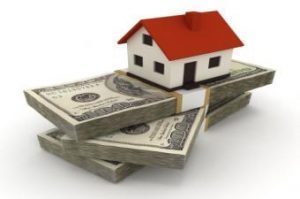 Homes in the U.S. are now 11.5 percent higher than they were just one year ago, according to the Real House Price Index (RHPI) released by First American on Thursday. Real house prices also jumped nearly a full percent between February and March and 1.3 percent for the first quarter of 2017. On an annual basis, prices were up in all metro areas tracked by the RHPI for the third consecutive month.
Homes in the U.S. are now 11.5 percent higher than they were just one year ago, according to the Real House Price Index (RHPI) released by First American on Thursday. Real house prices also jumped nearly a full percent between February and March and 1.3 percent for the first quarter of 2017. On an annual basis, prices were up in all metro areas tracked by the RHPI for the third consecutive month.
Despite the climb, house prices aren’t yet at their worst. They’re still 32.5 percent below their peak—reached in July 2006 during the housing boom—and nearly 10 percent below the prices of January 2000.
As for mortgage rates, the RHPI showed the average 30-year fixed-rate mortgage remained above 4 percent for the fourth month in a row. Though wages have helped to offset these higher rates, rising 2.7 percent over the year, increasing home prices have hurt overall affordability. According to Mark Fleming, Chief Economist at First American, the rising prices can largely be attributed to inventory shortage.
"If everyone sells, the supply squeeze would ease,” Fleming said. “However, homeowners may not be putting their homes on the market because they're wary of the risk of selling when others don't—the inability to find another home to purchase at the right price.”
According to the RHPI, unadjusted home prices were up 5.8 percent over the year and as of March, sit at 2.4 percent above their 2008 peak. As a result, consumer house-buying power—or the amount of home consumers can purchase based on median incomes and average interest rates—dropped 5.2 percent year over year.
“Real, purchasing-power adjusted house prices are rising even faster than unadjusted home prices alone, primarily due to declining consumer purchasing power,” Fleming said. “Strong Millennial demand, a limited supply of homes for sale, and higher mortgage rates have all combined to impact the affordability of homes compared to a year ago.”
Jacksonville, Florida, came in with the nation’s biggest jump in real home prices over the year, rising 18.8 percent since March 2016. Rounding out the top five were Milwaukee (18.3 percent); Charlotte, North Carolina (16.6 percent); Denver (15.4 percent); and Seattle (14.9 percent). At a state level, Wisconsin, Michigan, Alabama, New York, and Colorado saw the biggest increase.
The smallest jumps in real home prices were in Nebraska (1.2 percent), Tennessee (4.3 percent), Massachusetts (4.4 percent), Connecticut (5 percent), and Montana (5.2 percent). Hartford, Connecticut, had the smallest increase of all metro areas with just a 4.6 percent rise in prices.

 theMReport.com Your trusted source for mortgage banking news
theMReport.com Your trusted source for mortgage banking news








